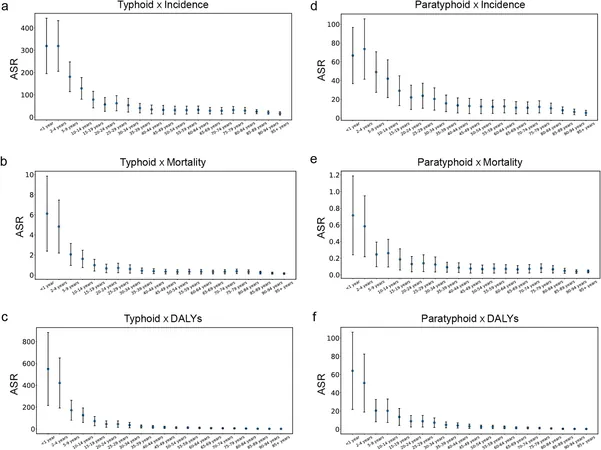
Revealing the Impact of Typhoid and Paratyphoid Fever: Trends from 1990 to 2021
2025-07-15
Author: Sarah
A Global Health Crisis
Typhoid and paratyphoid fever have long posed a significant health threat, particularly in low-income nations. Despite a notable decline in reported cases over the last three decades, these infections still burden public health systems in affected regions, particularly in South Asia and parts of Africa.
Research Overview
This comprehensive study evaluates the global burden of typhoid and paratyphoid fever from 1990 to 2021, examining regional differences and temporal trends. Utilizing the latest data from the Global Burden of Disease (GBD) study, researchers analyzed incidence rates, mortality, and disability-adjusted life years (DALYs) across various socio-demographic indices.
Dramatic Decreases in Cases
Remarkable progress is evident in the battle against these fevers. From 1990 to 2021, the global incidence of typhoid fever plunged by 62.12%, along with a 50.65% decline in deaths and a staggering 52.30% drop in DALYs. Meanwhile, paratyphoid cases witnessed a 73.15% decrease, with deaths falling by 65.44% and DALYs by 68.42%.
Who is Most Affected?
Despite these improvements, children remain the most vulnerable, suffering the highest rates of morbidity and mortality. Males exhibit higher rates of infection across all age groups, yet older females show an alarming number of new cases.
Regional Insights
Distinctly, South Asia and Southeast Asia are hotspot regions for these fevers. Countries like Burkina Faso, Bangladesh, and Papua New Guinea report the highest incidence rates, creating a pressing need for targeted public health strategies.
Transmission and Symptoms
Both typhoid and paratyphoid fevers are caused by the Salmonella enterica bacteria, primarily through contaminated food and water. Symptoms vary widely, leading to potential misdiagnosis and underreporting, particularly in endemic regions.
Global Efforts and Challenges
While public health measures and improved sanitation have significantly curtailed incidence rates, the emergence of antibiotic resistance poses new challenges. Regions with limited healthcare resources remain particularly vulnerable, highlighting the necessity for comprehensive surveillance and vaccination efforts.
The Road Ahead
Despite recent successes, the fight against typhoid and paratyphoid is far from over. Ongoing global efforts are essential to combat these diseases—monitoring resistance patterns, harnessing innovative treatments, and enhancing vaccination coverage remain critical. As the world becomes more interconnected, vigilance is paramount to prevent new outbreaks.
Conclusion
This study underscores the importance of continued research and intervention strategies in reducing the burden of typhoid and paratyphoid fever. By leveraging data and strengthening healthcare infrastructure, we can forge ahead in mitigating the impact of these infectious diseases for future generations.



 Brasil (PT)
Brasil (PT)
 Canada (EN)
Canada (EN)
 Chile (ES)
Chile (ES)
 Česko (CS)
Česko (CS)
 대한민국 (KO)
대한민국 (KO)
 España (ES)
España (ES)
 France (FR)
France (FR)
 Hong Kong (EN)
Hong Kong (EN)
 Italia (IT)
Italia (IT)
 日本 (JA)
日本 (JA)
 Magyarország (HU)
Magyarország (HU)
 Norge (NO)
Norge (NO)
 Polska (PL)
Polska (PL)
 Schweiz (DE)
Schweiz (DE)
 Singapore (EN)
Singapore (EN)
 Sverige (SV)
Sverige (SV)
 Suomi (FI)
Suomi (FI)
 Türkiye (TR)
Türkiye (TR)
 الإمارات العربية المتحدة (AR)
الإمارات العربية المتحدة (AR)